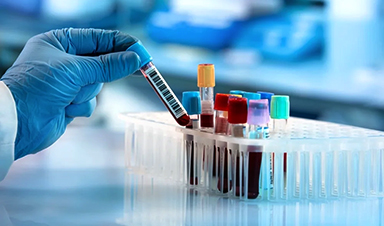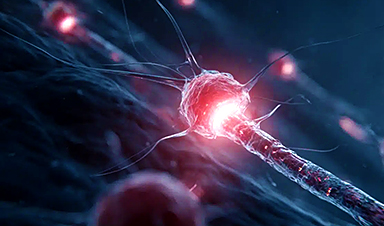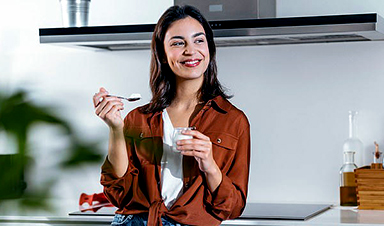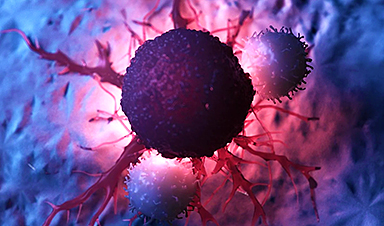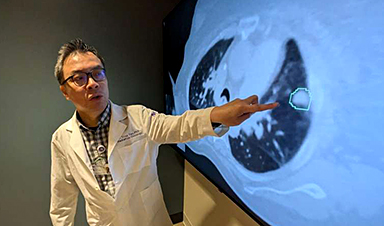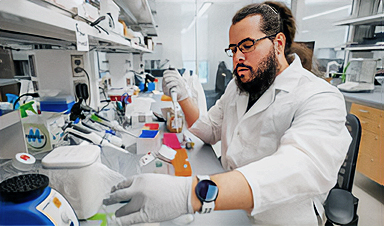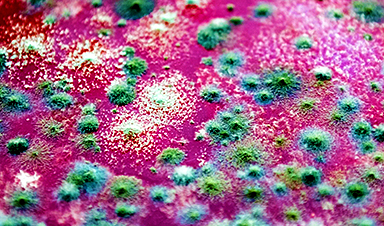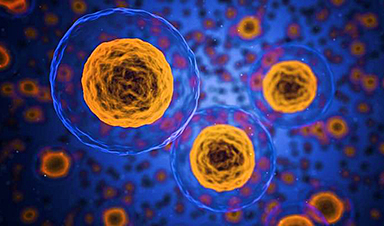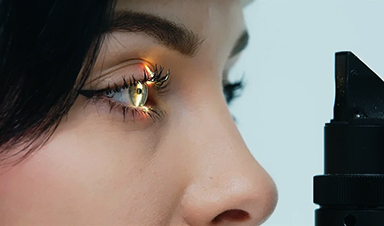Although blood-biomarker-based tests help in the early diagnosis of Alzheimer’s disease, the low abundance of blood protein biomarkers related to Alzheimer’s disease and the complexity of the human serum environment pose a challenge in diagnosis and treatment.
Due to the small size of nanomaterials, they are considered promising candidates for constructing biosensors with high sensitivity. Moreover, fabricating nanomaterials-containing transistor-based biosensors is challenging on a large scale and often lacks sensitivity and reproducibility in complex physiological fluids.
In an article recently published in the journal ACS Sensors, mass production of field-effect transistor (FET) biosensors based on carbon nanotube thin films was reported to realize high selectivity and sensitivity toward the detection of Alzheimer’s disease blood biomarkers of beta (β)-amyloid (Aβ).
The mass-produced carbon nanotube FET-sensors were combined with oligonucleotide aptamers to achieve efficient bioreceptors that enable reproducible and reliable Aβ42 and Aβ40 peptide detection in human serum with sub-femtomolar detection sensitivity, thus outperforming other existing detection methods towards Alzheimer’s disease.
Application of Carbon Nanotube Network Films Toward Alzheimer’s Disease Detection
Alzheimer’s disease is the common cause of dementia and leads to progressive cognitive decline. Moreover, Alzheimer’s disease is incurable and irreversible after the outset of cognitive symptoms. Hence, early diagnosis and disease-modifying treatments before the onset of symptoms are critical for Alzheimer’s disease treatment.
In Alzheimer’s disease diagnosis, Aβ protein level measurement in cerebrospinal fluid (CSF) and Aβ positron emission tomography (PET) imaging are currently applied detection methods. However, these are not extensively applied because obtaining CSF fluid involves an invasive lumbar puncture, and PET imaging is an expensive procedure.
To this end, diagnosis based on Alzheimer’s disease blood biomarkers can be a better alternative to previously mentioned methods due to simple peripheral blood sample requirement, minimal invasion, and the low cost of the procedure. However, the low concentration of Alzheimer’s disease proteins in the blood, the significant presence of interferants in the blood that cause masking effects, and protein’s large dynamic range are a few challenges posed by Alzheimer’s disease blood biomarkers-based diagnosis.
Nanomaterials-based FET sensors are next-generation, highly sensitive, and label-free methods with high- integration capability. Despite the outstanding performance of nano-FET sensors, their clinical application for blood-based biomarkers detection remains challenging to facilitate their application in diagnosing Alzheimer’s disease.
Semiconducting carbon nanotube network films are promising nanomaterials to construct FET biosensors with ultra-sensitivity. However, large-scale fabrication of carbon nanotube FET-based biosensors to detect ultralow biomarker concentrations with quick response in complex physiological environments remains unexplored.
Aptamer-Functionalized Carbon Nanotube FET Biosensors for Alzheimer’s Disease Diagnosis
In the present work, carbon nanotube FETs functionalized with nucleic acid aptamers were manufactured via a high-throughput fabrication process. In doing so, the team was able to achieve a highly selective and sensitive biosensor array for detecting Aβ proteins in serum at low concentrations and thereby promoting the clinical application of carbon nanotube FET-based sensor in early diagnosis of Alzheimer’s disease.
This FET sensor leverages the advantages of semiconducting carbon nanotube network film and DNA aptamers that are modified on a floating gate (FG) insulator. These modified DNA aptamers serve as Aβ40 and Aβ42 peptide selective receptors for the early detection of Alzheimer’s disease.
DNA aptamer-functionalized carbon nanotube FETs can detect Aβ40 and Aβ42 peptides in undiluted serum and single-strength phosphate buffer saline with a limit of detection (LoD) of 50 attomoles. The DNA aptamer-functionalized carbon nanotube FET sensors were highly selective towards Aβ peptides, immunoglobin G (IgG), and albumin masking proteins. Thus, carbon nanotube FET sensors outperform other Alzheimer’s disease sensing methods.
Moreover, the biological substrate’s adsorption to carbon nanotube FET biosensor has enhanced the selectivity ratios of up to 800% (Aβ42) and 730% (Aβ40). The DNA aptamer-functionalized carbon nanotube FET biosensor showed a quick response, wide dynamic range, low variation, and reduced overall cost, making this rapid detection method applicable for mass screening and early diagnosis of Alzheimer’s disease.
Conclusion
To summarize, aptamer-functionalized carbon nanotube FET biosensors were fabricated and explored for early diagnosis of Alzheimer’s disease by detecting the corresponding serum biomarkers in undiluted and single-strength PBS human serum. The aptamer-functionalized carbon nanotube FETs showed a broad analytical range with LoDs as low as 45 attomoles for Aβ42 and 55 attomoles for Aβ40.
The multi-blocking step reduced the nonspecific adsorption of biological matrix on aptamer-functionalized carbon nanotube FETs. Despite the presence of structurally similar proteins in the biological matrix solution, the selectivity ratio was improved by 800%. Moreover, these aptamer-functionalized carbon nanotube FETs showed a high recovery rate of 88 to 108%, high accuracy, serum-based long-term stability, and high reproducibility with less than 10% device-to-device variation.
Due to the high reliability and outstanding sensing properties, aptamer-functionalized carbon nanotube FET biosensors showed great potential as a cost-effective, reliable, and quick clinical platform, contributing toward advancements in mass screening tests and early diagnosis for Alzheimer’s disease.
News
Drug-Coated Neural Implants Reduce Immune Rejection
Summary: A new study shows that coating neural prosthetic implants with the anti-inflammatory drug dexamethasone helps reduce the body’s immune response and scar tissue formation. This strategy enhances the long-term performance and stability of electrodes [...]
Scientists discover cancer-fighting bacteria that ‘soak up’ forever chemicals in the body
A family of healthy bacteria may help 'soak up' toxic forever chemicals in the body, warding off their cancerous effects. Forever chemicals, also known as PFAS (per- and polyfluoroalkyl substances), are toxic chemicals that [...]
Johns Hopkins Researchers Uncover a New Way To Kill Cancer Cells
A new study reveals that blocking ribosomal RNA production rewires cancer cell behavior and could help treat genetically unstable tumors. Researchers at the Johns Hopkins Kimmel Cancer Center and the Department of Radiation Oncology and Molecular [...]
AI matches doctors in mapping lung tumors for radiation therapy
In radiation therapy, precision can save lives. Oncologists must carefully map the size and location of a tumor before delivering high-dose radiation to destroy cancer cells while sparing healthy tissue. But this process, called [...]
Scientists Finally “See” Key Protein That Controls Inflammation
Researchers used advanced microscopy to uncover important protein structures. For the first time, two important protein structures in the human body are being visualized, thanks in part to cutting-edge technology at the University of [...]
AI tool detects 9 types of dementia from a single brain scan
Mayo Clinic researchers have developed a new artificial intelligence (AI) tool that helps clinicians identify brain activity patterns linked to nine types of dementia, including Alzheimer's disease, using a single, widely available scan—a transformative [...]
Is plastic packaging putting more than just food on your plate?
New research reveals that common food packaging and utensils can shed microscopic plastics into our food, prompting urgent calls for stricter testing and updated regulations to protect public health. Beyond microplastics: The analysis intentionally [...]
Aging Spreads Through the Bloodstream
Summary: New research reveals that aging isn’t just a local cellular process—it can spread throughout the body via the bloodstream. A redox-sensitive protein called ReHMGB1, secreted by senescent cells, was found to trigger aging features [...]
AI and nanomedicine find rare biomarkers for prostrate cancer and atherosclerosis
Imagine a stadium packed with 75,000 fans, all wearing green and white jerseys—except one person in a solid green shirt. Finding that person would be tough. That's how hard it is for scientists to [...]
Are Pesticides Breeding the Next Pandemic? Experts Warn of Fungal Superbugs
Fungicides used in agriculture have been linked to an increase in resistance to antifungal drugs in both humans and animals. Fungal infections are on the rise, and two UC Davis infectious disease experts, Dr. George Thompson [...]
Scientists Crack the 500-Million-Year-Old Code That Controls Your Immune System
A collaborative team from Penn Medicine and Penn Engineering has uncovered the mathematical principles behind a 500-million-year-old protein network that determines whether foreign materials are recognized as friend or foe. How does your body [...]
Team discovers how tiny parts of cells stay organized, new insights for blocking cancer growth
A team of international researchers led by scientists at City of Hope provides the most thorough account yet of an elusive target for cancer treatment. Published in Science Advances, the study suggests a complex signaling [...]
Nanomaterials in Ophthalmology: A Review
Eye diseases are becoming more common. In 2020, over 250 million people had mild vision problems, and 295 million experienced moderate to severe ocular conditions. In response, researchers are turning to nanotechnology and nanomaterials—tools that are transforming [...]
Natural Plant Extract Removes up to 90% of Microplastics From Water
Researchers found that natural polymers derived from okra and fenugreek are highly effective at removing microplastics from water. The same sticky substances that make okra slimy and give fenugreek its gel-like texture could help [...]
Instant coffee may damage your eyes, genetic study finds
A new genetic study shows that just one extra cup of instant coffee a day could significantly increase your risk of developing dry AMD, shedding fresh light on how our daily beverage choices may [...]
Nanoneedle patch offers painless alternative to traditional cancer biopsies
A patch containing tens of millions of microscopic nanoneedles could soon replace traditional biopsies, scientists have found. The patch offers a painless and less invasive alternative for millions of patients worldwide who undergo biopsies [...]
